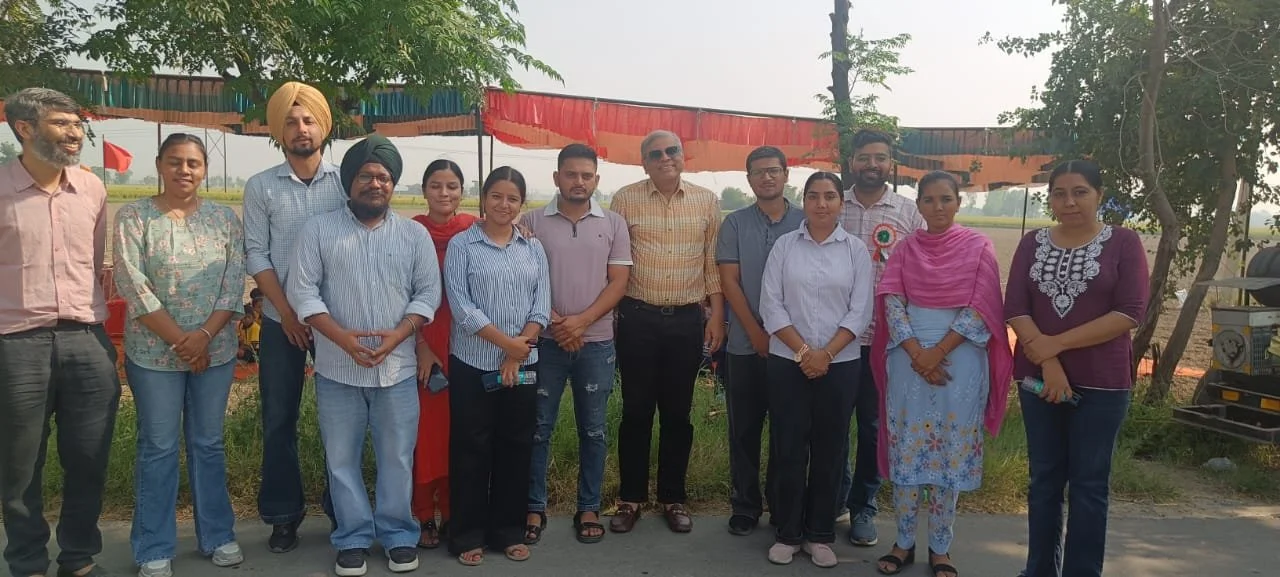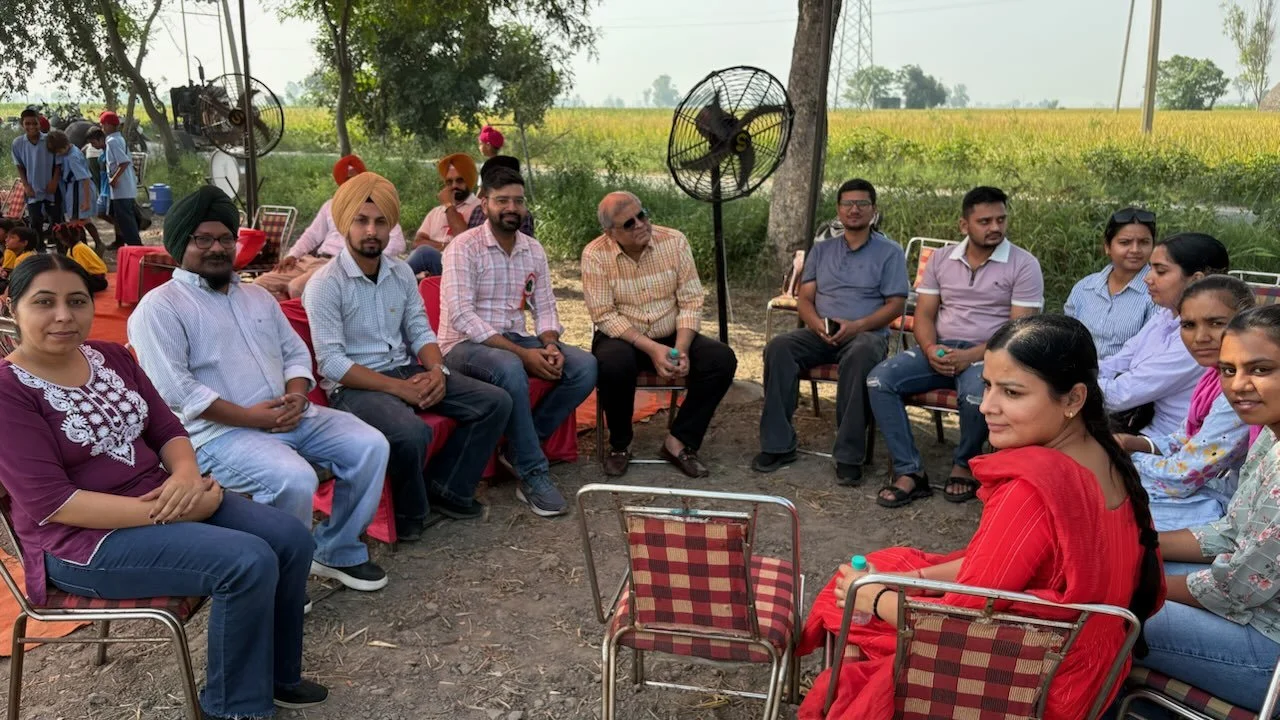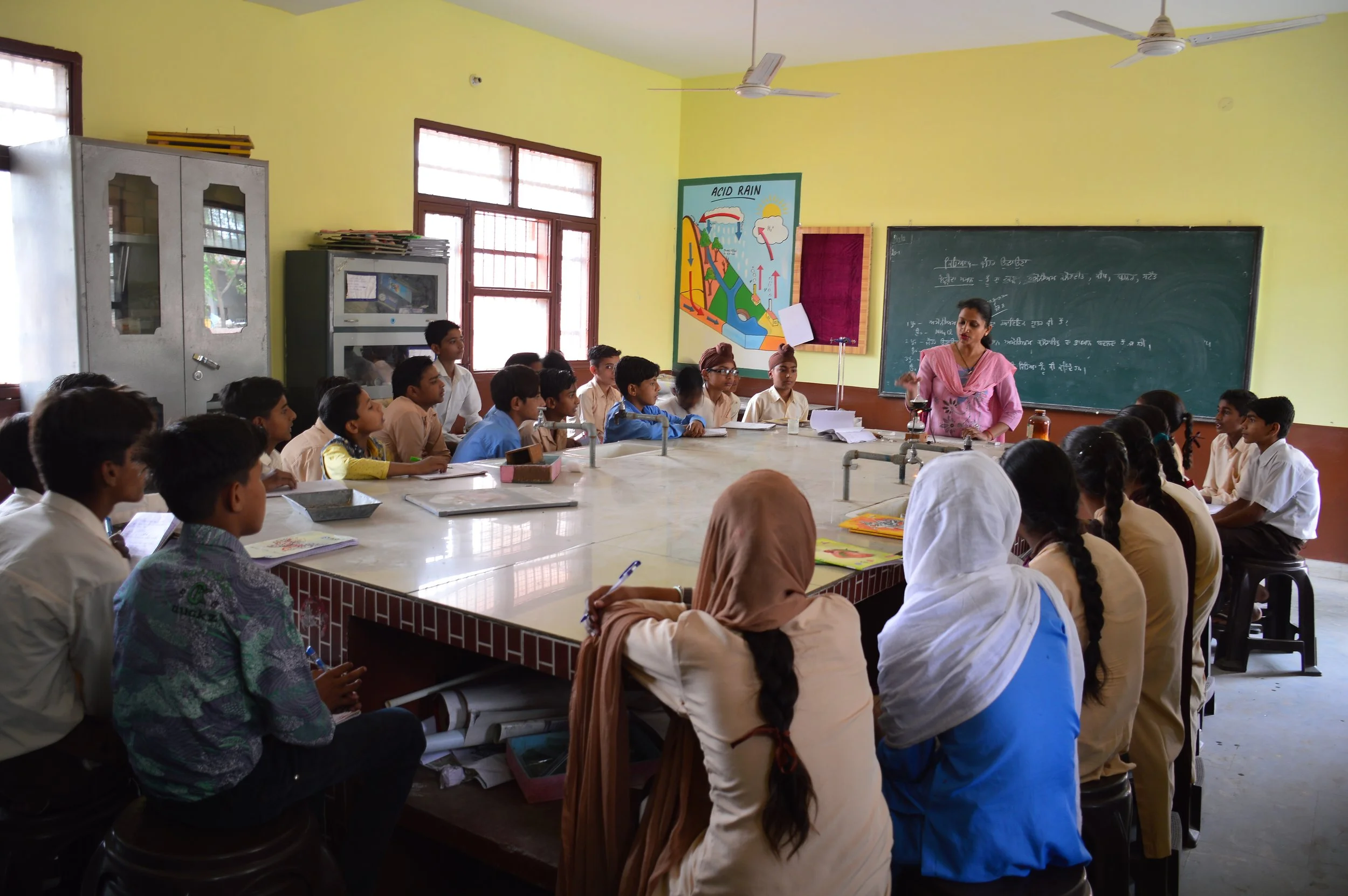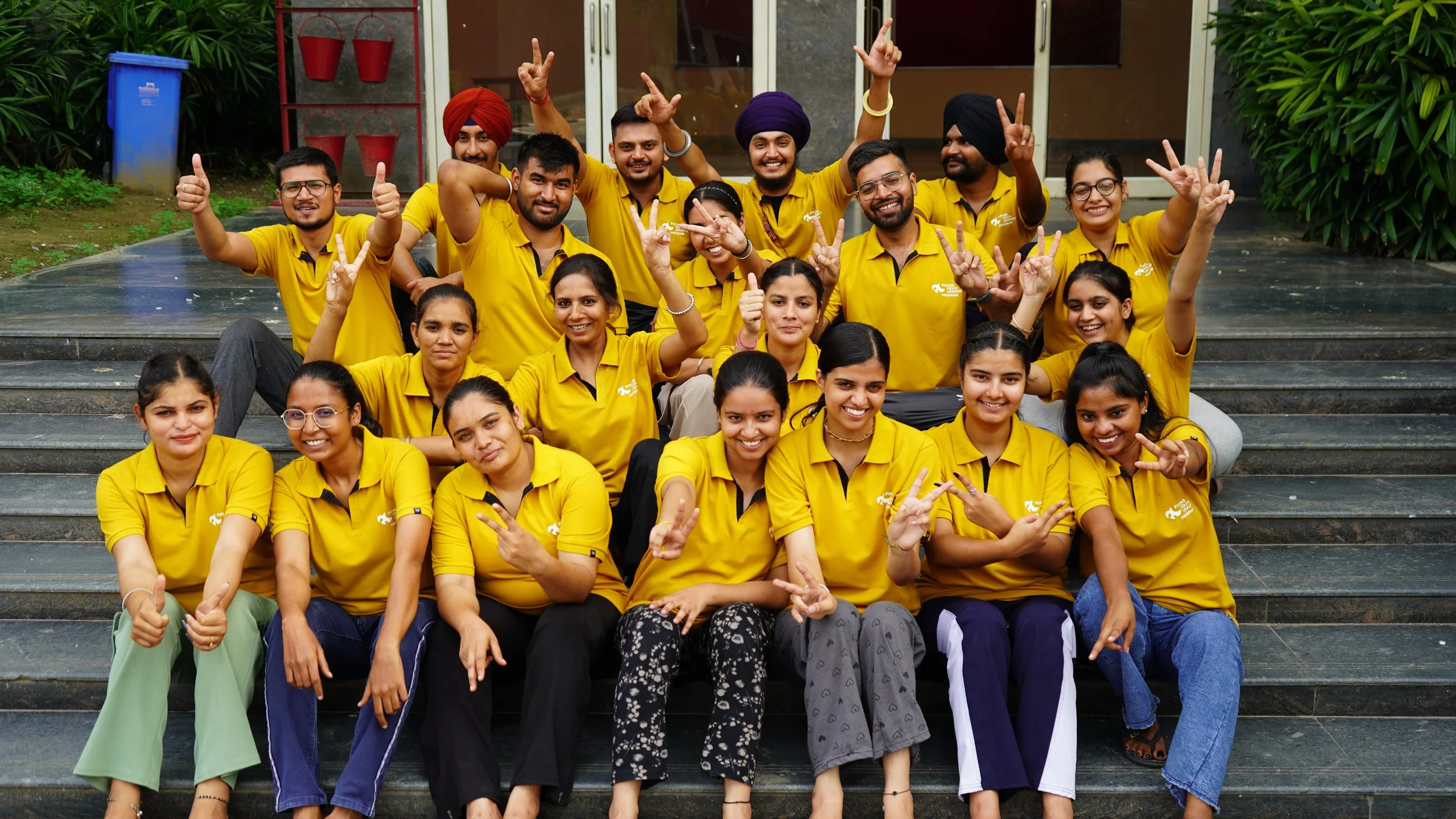A Fellowship that Dares to Reimagine Both Punjab’s Schools & Young Leadership
By Amit Chandra, Co-founder, A.T.E. Chandra Foundation & Chairperson, Bain Capital Advisors (India)
It could well be a scene straight out of a Bollywood movie — a clearing made for sports amidst the lush green fields of Punjab, dotted with the vibrant colours worn by both adults and children. I land there early in the morning after visiting the much-revered Dukhniwaran Sahib Ji Gurudwara in Patiala, associated with the Ninth Guru. I am there to be inspired — because stories of how youth are being wasted in Punjab have, sadly, become themes of movies and hit songs. For Punjabis like me, who grew up witnessing the vibrancy of its youth, this decline has been heartbreaking.
But then, the Punjabi spirit has always been one of fighting against all odds. My visit to Dudhad village, on the outskirts of Patiala on an October morning, was to witness one such story unfolding through the work of Sanjhi Sikhiya. A seven-year-old Punjab-based NGO, Sanjhi Sikhiya was born out of one simple yet radical idea — that systemic change can only emerge from within communities themselves, and must involve youth leaders, focusing first on education.
Something interesting is happening where I visit. Young students from 5 to 12 years of age have gathered from about ten nearby schools to participate in a sports tournament. The young sarpanch, Jasbir Singh, has specially created a sports field for the event with a shamiana to host the children and visiting dignitaries. To elevate the status of the event, the local MLA and SP have graced the occasion, leading to a lot of excitement among the teachers and community. I meet a group of 12 youth leaders — over half of them women — who are working with the organization as part of a program that is quietly sparking a revolution in its schools, villages, and within themselves. How does this signify progress? What is the endgame?
To understand this, we need to go back to 2018, when Simranpreet Singh Oberoi, an Ashoka University YIF alumnus, returned to his home state with a troubling question: why were so many children in Punjab’s government schools failing to learn, despite well-meaning reforms and generous budgets? Soon, he teamed up with his co-founders — Ankit Chhabra, an engineer and IISc graduate, and Ishpreet Kaur, a Thapar University graduate and Teach For India alumna. They gathered a few like-minded colleagues — educators, civil servants, and grassroots workers — and began mapping systemic gaps. Their insight was that the education challenge wasn’t just in classrooms. It lay in weak youth leadership pipelines, fractured accountability, and a disconnect between policy and practice.
With a theory of change to address this, Sanjhi Sikhiya was born — the term literally meaning “Collective Learning.” They aspire to nurture a generation of youth who can bridge these divides by working with the system, not against it. Their dream is to help make Punjab once again a land of hope, courage, and possibilities — where youth and children have an enabling environment to realize their full potential. Achieving this requires a long-term approach: investing in youth leaders as levers of change. Those leaders then work with the system to rebuild trust, strengthen communities, and create a more just and vibrant society. At the heart of this is one transformative belief — change begins when people closest to the problem lead the solution.
Unlike a model of direct change, where success can come early and is more measurable, Sanjhi Sikhiya has chosen a much tougher, longer-term route. It designed the Punjab Youth Leaders Program (PYLP) — a two-year fellowship that places about 20–30 talented and motivated youth leaders annually in clusters of 10–15 government primary schools. Through this, it impacts about 340+ schools and 28,000+ students annually. These youth leaders work alongside teachers, principals, and local administrators to improve classroom practices, drive community participation, and strengthen district education systems.
Injecting motivated and talented young leadership helps develop local, empathetic leaders who can navigate bureaucracy, inspire teachers, and mobilize communities. Given the heavy non-teaching workload faced by teachers, these leaders provide invaluable support by facilitating regular cluster meetings, coaching teachers in pedagogy, and encouraging peer learning. When it comes to the community, they help build School Management Committees and village partnerships so that parents and citizens can co-own the education system.
The approach is one of collaboration and shared learning, and so the organization works with the Punjab Education Collective (PEC) — a coalition it helped establish with other NGOs such as Mantra4Change, Samarthya, and ShikshaLokam, along with the state government. Today, PEC touches 2.3 million students across nearly 19,000 schools. Their collective impact has ensured that Punjab’s education system — once struggling — now ranks #1 in India’s national School Education Performance Grading Index (PGI) 2020–21, a remarkable leap from #13 just two years earlier.
The stories from the ground are heartening — like that of Prabhjot Sharma from Muktsar Sahib district, who never imagined stepping out of her home district. Today, others look up to her as a youth leader — capable of shaping young minds and driving change in a district hundreds of kilometres away. There are young women and men like her, from across Punjab and as far as Bihar, who are helping drive transformation at the community level. Thanks to leaders like them, one now hears of schools that once struggled with attendance now boasting 95% turnout after parents joined hands to launch sikhiya sabhas.
With its scale, experience, and depth, the organization is beginning to understand what it means to help transform Punjab’s public education through participation, partnership, and perseverance. It rejects the idea that reform must be top-down. Instead, it bets on people — young leaders, teachers, and parents — as the carriers of deep, lasting change. This journey is still young, but it is inspiring a new kind of optimism: that when empathy meets evidence, and when citizens work with the state rather than around it, even the most complex systems can transform. From a handful of dreamers in 2018 to a growing collective and alumni base that is shaping a system, Sanjhi Sikhiya is proving that education reform is not just about better schools — it’s about building stronger communities and ensuring better social spending.




